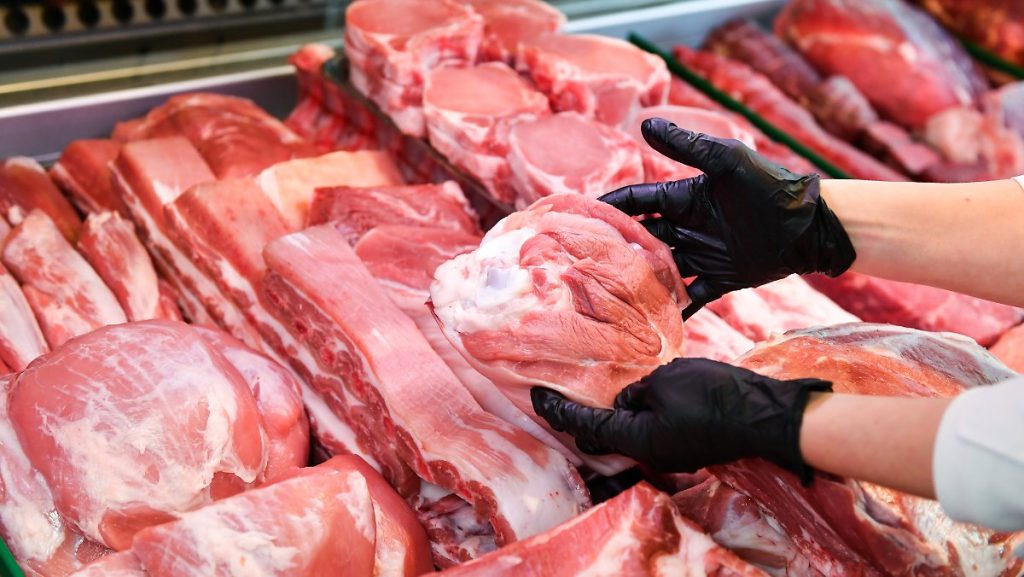Monday, November 22, 2021
Statistical context
Meat trade makes consumers sick
Meat contains many important nutrients – but it’s important to find the right amount. Meat and sausages are becoming daily food in more and more countries. Researchers are now tracking the consequences for health using statistics.
According to an analysis, the global increase in consumption of beef and pork in particular has been accompanied by a marked increase in diet-related diseases over the past three decades. The impact was greatest in northern and eastern Europe as well as in the island nations of the Caribbean and Oceania, researchers report in the specialized journal BMG Global Health. However, they did not investigate the link directly, but used trade and disease figures.
High consumption of red and processed meat has been linked to an increased risk of diseases such as colon cancer, diabetes and coronary artery disease. Beef, pork, and sheep are referred to as red meat. White meat comes from poultry. The International Agency for Research on Cancer (IACR) in Lyon has classified red meat consumption as “possibly carcinogenic”. Even processed meat is considered “carcinogenic”. Many dietary guidelines recommend low meat consumption.
But the demand for meat has increased rapidly in many countries. With urbanization and rising incomes, the global trade in red and processed meat has grown exponentially over the past few decades, Now explain the scientists working with Min Gon Chung of Michigan State University in East Lansing. The researchers note that trade plays a fundamental role in the global availability of meat, but it also leads to enormous environmental and health consequences. Production for export puts great pressure on land use and leads to biodiversity loss in exporting countries. With increased consumption, there has also been a sudden increase in diet-related diseases.
Meat trade increased by 150%
Scientists have tried to put this connection in numbers. The basis was data from the Food and Agriculture Organization of the United Nations (FAO) on meat production and trade for more than 150 countries from 1993 to 2018. For 20 particularly relevant products made from beef, pork, lamb and goat, imported products and exported quantities. Six of the products consist mainly of beef and pork and have been preserved by smoking, salting, curing or chemicals. Estimates of the proportion of goods discarded during transportation and storage are also included.
World trade in red meat, some of which is processed, rose by about 150 percent: from 10 million tons in 1993 to 1995 to nearly 25 million tons in 2016 to 2018. Half of exports went to industrialized countries in both periods. Europe. Developing countries increased their imports by more than 340 percent from 2 to nearly 9 million tons; Industrialized countries doubled their imports from 8 to 16 million tons. The most important recent exporters have included Brazil, the Netherlands, and Germany, among others.
Meanwhile, the researchers calculated the percentage of deaths and years of life for people with disabilities, which they attributed to dietary influences such as colon cancer, type 2 diabetes and coronary artery disease in people aged 25 and older in countries. The number of diet-related deaths statistically related to the global trade in meat products increased in three-quarters of the 154 countries – an average of nearly 75 percent. The years in which the restrictions were lived increased more.
Plus evenly distributed
The increase was distributed unevenly: in industrialized countries – which often had a high level of meat consumption beforehand – the number of deaths rose by about 55 percent, while in developing countries it rose by about 137 percent. The 10 countries with the highest proportion of deaths related to red and processed meat consumption between 2016 and 2018 include the Netherlands, the Bahamas, Tonga, Denmark, Antigua and Barbuda, Seychelles, the United Arab Emirates, Singapore, Croatia and Greece.
The researchers noted that there was no causal relationship, but only a statistical relationship was demonstrated. Other factors such as changes in exercise behavior or in other areas of nutrition were not taken into account. In addition, many countries import red meat in order to process it for export – this can distort the results achieved. Overall, the data clearly indicates that the global increase in the trade in red and processed meat has contributed to a sharp rise in diet-related diseases.
Scientists stress that politicians should also use trade to promote healthier and more sustainable diets for the population. They explained that the European Union, which accounts for half of the world’s meat trade, is preparing to impose border taxes on imported goods depending on the greenhouse gases emitted during production. A carbon tax on meat and meat products could help achieve a sustainable diet with less red and processed meat. According to the researchers, emissions during transportation must also be taken into account.

“Total coffee aficionado. Travel buff. Music ninja. Bacon nerd. Beeraholic.”







More Stories
Exploding Fireball: Find the meteorite fragments
Neuralink's competitor lets blind people see again with an implant
A huge meteorite has hit Earth – four times the size of Mount Everest